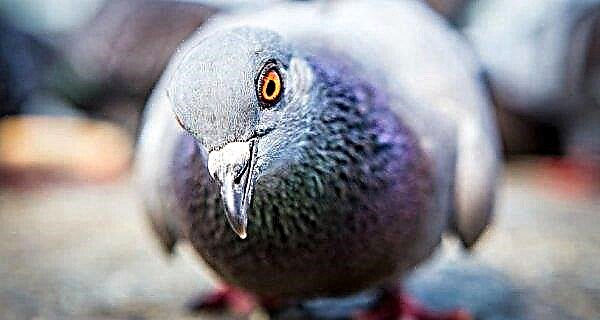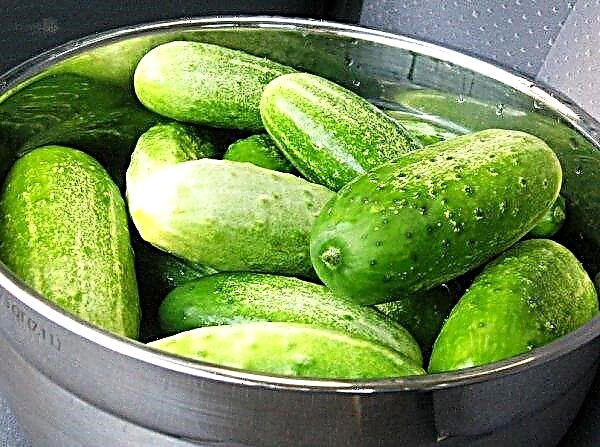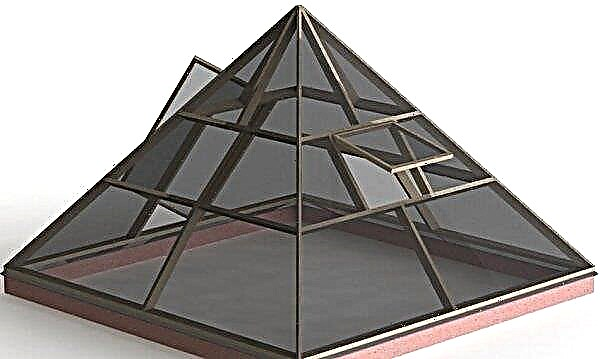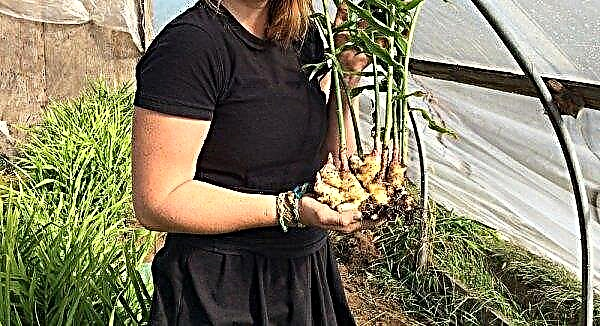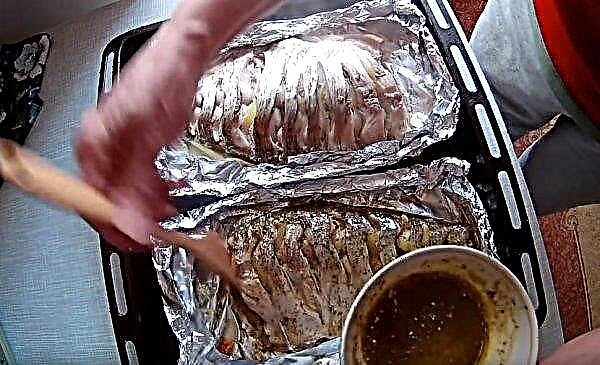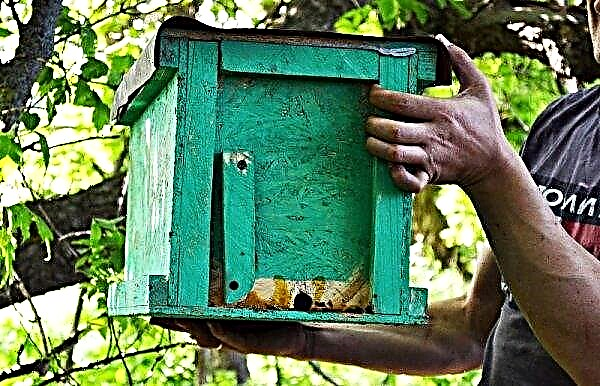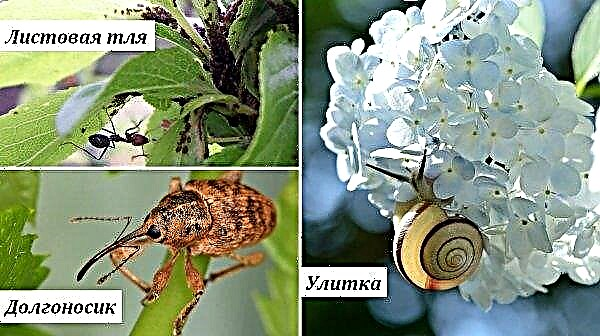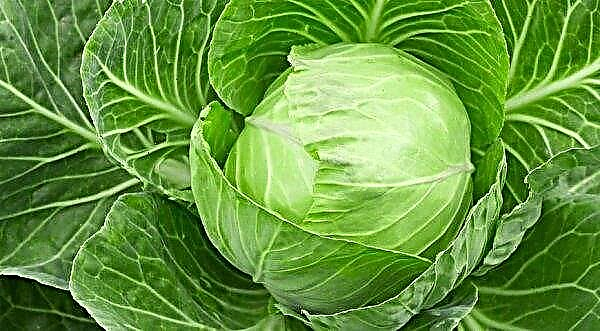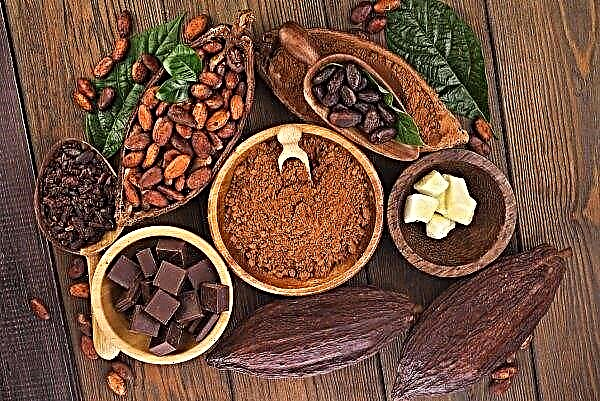To enjoy a delicious watermelon, you go shopping with the firm intention to purchase a natural, high-quality product. Buying is not a tricky business, but how do you know that a watermelon is ripe and juicy and does not have excessive nitrates, what does a natural berry look like? Armed with knowledge and taking into account our advice, you can easily and simply make the right choice.
When is the best time to buy watermelon?
The best time to buy is mid-August - end of September. It is this period of time - the season of mass ripening of berries.
There are various varieties of these berries. They differ in shape (round, oval), color (green-striped, dark green, white, etc.), the color of the flesh (red, yellow), the presence of seeds and others. But the most beloved and demanded are still only a few of them.Did you know? The watermelon contains 92% of water, which allows a person to get enough of the product and get drunk.
Popular varieties of watermelon
The most famous varieties of this dessert:
- Astrakhan - coarse-grained, aromatic, sweet;
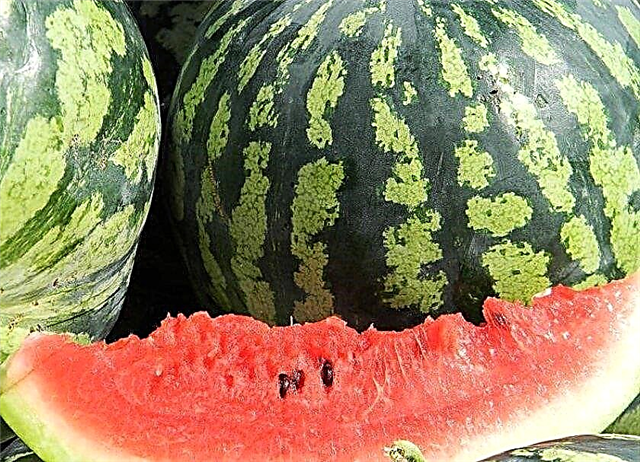
- Twinkle - his pulp is red and bright, has excellent taste;

- Crimson Sweet - the pulp is quite juicy, quenching thirst;

- Sugar baby - delicious, small seeds;
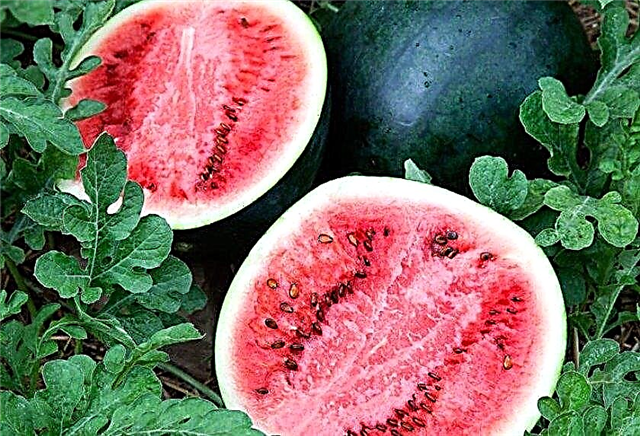
- Charleston gray - grainy, juicy, effectively quenches thirst;
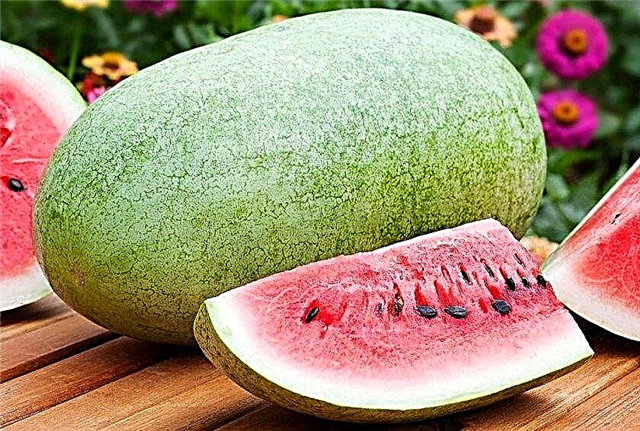
- Top Gun F1 - dark red pulp, high sugar content;
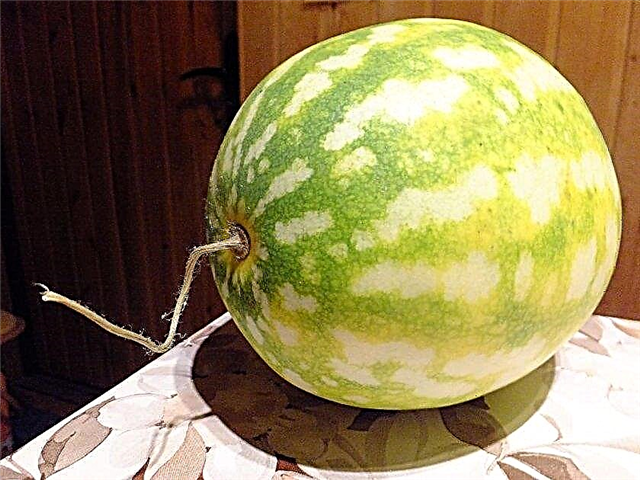
- Lunar - inside is yellow, tasty;
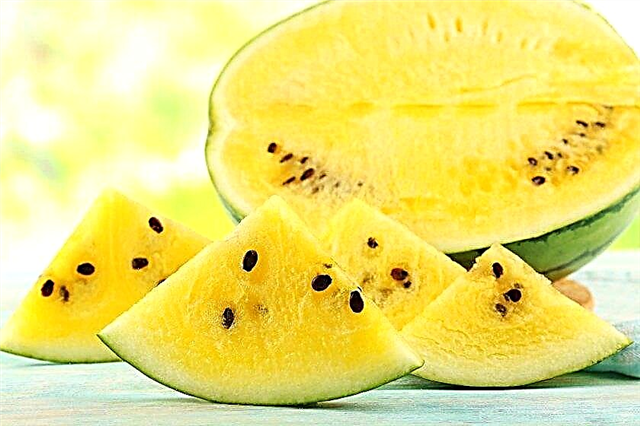
- Gift of the sun - yellow peel, red pulp, sweet.

When going for a purchase, you need to know that the sale of this product must be subject to certain rules and comply with accepted standards.
Important! Popular sugar Kherson watermelons do not grow very large (up to 10 kg), and if you are offered a 20-kilogram giant, then you are deceived - this is another variety or berry grown on nitrates.
How to buy
You should not take a watermelon, cut in half or in parts, even if they are packed in cling film. Ask an elementary question: whether the berry, knife and hands of the seller were washed. In violation of sanitary and hygienic rules, the flesh becomes an excellent environment for the development of bacteria and, as a result, can cause poisoning or intestinal upset in humans.
On the market
If you are buying at the bazaar (this is not a spontaneous market or tents along the roads - this is unacceptable), you should look at the presence of a canopy that protects the product from direct sunlight and precipitation.  The pan on which the berries lie should be at a level of 20 cm or more from the surface of the soil. The sale of berries from the ground is not allowed. The outlet should not be near the roadway, but be away from it, because the watermelon, like a sponge, absorbs harmful substances from the exhaust gases of cars.
The pan on which the berries lie should be at a level of 20 cm or more from the surface of the soil. The sale of berries from the ground is not allowed. The outlet should not be near the roadway, but be away from it, because the watermelon, like a sponge, absorbs harmful substances from the exhaust gases of cars.
In the shop
Both in the bazaar and in the store, the food pallet should be installed at a height of not less than 20 cm from the floor, be clean, protected from the sun. The room should be well ventilated. Take it at stores you trust.
Important! Wherever you buy watermelon (in the market or in the store), a seller must have a certificate of goods
Visually choose the most ripe and sweet watermelon
The berries, which are identical and very similar at first glance, have some differences and characteristics characteristic of this product. Consider the main differences and criteria by which the best berry is determined.

To size
First decide what size you want the fruit. Depending on the variety, they can be small, and can reach a weight of up to 20 kg. Medium-sized specimens from 5 to 10 kg are recommended for purchase. Even larger ones can also be good, but there is a possibility that they are stuffed with nitrates, so it’s better not to take risks, adhering to the rule - it is better less, but better.
Did you know? The world's largest watermelon was grown in the USA in 2013 with a weight of 159 kg, which is equivalent to 23 medium-sized watermelons. In Europe, the championship belongs to the instance from Russia (Krasnodar Territory), whose weight was 61.4 kg.
By sound and crunch
By tapping the fetus by the sound it makes, it is possible to determine ripeness. Unripe berry has a dull sound, and ripe and juicy - sonorous. It should be noted that the overripe specimens also sound deaf (the flesh begins to sour, wander). Remember - the sound of a knock should be loud, and if you squeeze the fruit with your hands, you can hear a slight crackle, indicating a good ripeness of the product. Those with a thin crust, not more than one centimeter of thickness, easily compress and turn out to be the most delicious.

The appearance of the peel
It is necessary to carefully examine the appearance of the peel. The presence of various dents, cracks or some visible signs of damage, decay on it is unacceptable. If it is matte and it is easy to damage it with a fingernail, this is an unripe product. In a good berry, the peel is glossy and hard, shiny. Striped varieties of the strip on the peel are clear, bright, and if they are located at a great distance from each other, then in front of you is a ripe, sweet specimen.
By smell
It is not surprising, but how good the fruit can be determined by smell. Run a fingernail over the peel, making a small scratch, and smell the green grass, you made a good choice.
Side spot on the field
During ripening, the berry lies in contact with the ground, and a bright spot appears in this place - a field spot. It is also called earthen or "cheeks". A light spot (close to white) means that it has not matured, but yellow or even orange is the guarantee that you are buying a ripe, well-ripened specimen.  It is important to evaluate the size of the spot, it should not be very large. A vague rather big spot, most likely, means that the fruit ripened with a lack of light and heat, with a temporary delay in development, which means that its taste will be low.
It is important to evaluate the size of the spot, it should not be very large. A vague rather big spot, most likely, means that the fruit ripened with a lack of light and heat, with a temporary delay in development, which means that its taste will be low.
Dry tail
It is a mistake to assume that the presence of a dry tail (peduncle) in a watermelon is the first reliable sign by which a quality product is selected - its ripeness. The green tail of the plucked berry will dry in three to four days.
Given the time of harvesting, transportation, receiving goods for sale, it is simply impossible to determine whether the tail on the bed was green or already dried. Nevertheless, it is recommended to choose a berry with a dry tail, since the green stalk means that it was removed from the bed not matured. If the edge of the tail is so dry that it crumbles in your fingers, the berry is ripe.
On the floor of a watermelon
It is very interesting that watermelons are divided by gender - there are “boys” and “girls”. The representatives of the male sex are narrow and elongated, oval, and larger in size. “Girls” are smaller and round in shape, slightly flattened from the poles. Having examined the place where the flower used to be, you will see a spot. If it is large and flat, this watermelon is a “girl”, small and convex is a male specimen. When buying goods, preference is given to "girls" - they are more juicy and sweet.

To accelerate the growth and ripening of berries, nitrogen fertilizers are used, which, accumulating in the berries, can cause intoxication and harm your health. It is important to choose not only a ripe product with good taste, but also safe, in which there are no substances hazardous to health.
How to recognize a watermelon with nitrates
Inspect your fetus carefully. If there are small brown or black spots on its surface, dots are direct evidence of the fact that nitrates (nitrogen salts appeared on the peel) are found in it, and in large quantities. And to find out about the presence of harmful substances, if the appearance of your choice matches all the signs and characteristics of an excellent product, you can only cut the berries.
The color of the pulp is unevenly red, with a purple tint and spots; yellow veins from the crust to the middle; seeds of different colors (black and light) - all this indicates an excess of nitrates in the product. Having cut it, take a look at what color the flesh is: in a good berry, the cut will have flesh with grains (sugar), and in a nitrate-containing one, the middle is unnaturally glossy, smooth.Important! Watermelon nitrates are distributed unevenly — closer to the crust and peduncle. For reinsurance, give the children only pulp cut from the middle.
You can also check the quality of the product you bought at home in a simple way. In a glass of water, dip a piece of pulp (a tablespoon) and crush it, if the water becomes cloudy after an hour - this is a natural product; the water turned red or pink — there are nitrates.
Video: How to choose a watermelon and check for nitrates
Having studied the features and characteristics of a watermelon, following the recommendations, you can confidently go shopping as a person who knows this business. The result is a fragrant, healthy and simply delicious dessert on your table.









